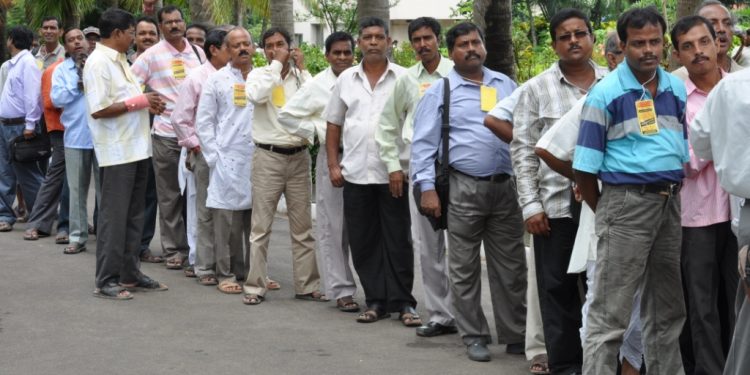In the aftermath of the outbreak of COVID-19 in India and the multiple lockdowns resulted in loss of jobs by millions of workers. The government injected multiple doses of stimulus to help the poor and the underprivileged tide over this crisis. Rs20 lakh crore was said to have been earmarked under various heads to provide succor to these people. The massive allocations were also expected to revive consumption. However, a lion’s share of this money purportedly aimed to benefit the rural poor. There was nothing much for the rural and urban middle classes. The middle class, especially the salaried individuals, a big consumption driver that formed a fulcrum of support for the Modi government in 2014 and 2019, was one of the worst-affected by the pandemic. They did not benefit much from the repeated package announcements by the Union finance minister and the Prime Minister, including the Income Tax rejig. Various policy initiatives by the Centre and the state governments, in various times, have injected dollops of aid for the village poor and the working class people of the country. Such massive handouts have created a look-to-the government attitude for everything in rural India. They have made these people, especially agricultural labourers rather smug. They no longer have the urge or the urgency to go out and work in fields to feed their families. People who did not want to live off these freebies and wanted to earn more headed to urban areas to work in sectors as varied as construction, real-estate, sales and retail, among others. The exodus of working class people from rural areas to urban pockets created a crater of shortage of farmhands in rural areas. The affluent and the land-holding class were miffed as there was a shortage of labourers who worked in their fields. The Mahatma Gandhi National Rural Employment Guarantee Scheme (MGNREGS), a flagship scheme by the UPA government, worked as a two-edged sword. While it alienated the rich from the government, the scheme could not deliver the number of work-days that it had promised to the beneficiaries, forcing the latter to migrate to urban areas for good income. This in a way created large-scale disillusionment against the UPA government. The Bharatiya Janata Party (BJP) had ridden this wave to come to power in 2014. However, a barrage of policies, pre and post COVID-19 outbreak, has fast alienated these people from the government and threatens to haunt the Modi government now.
There is palpable middle-class anger against this government. Their sustained neglect by the Centre has alienated them. The COVID-19 and the resultant migration of labourers to rural pockets have also had a telling impact on urban businesses. Earlier, there was plenty of labour available in urban areas. People were up for the ask at low wages. Now that millions of workers have left for their homes and they are no longer confident to come back, has hurt the labour market in urban areas – causing a temporary labour shortage. This is likely to push wages in urban areas. The small and medium entrepreneurs in urban areas who had already been hammered by a demand slump and are working with wafer-thin margins over past couple of years will see their wage bills go up – making their businesses further vulnerable. This could be bad news for the urban middle-class especially the salaried individuals. They supported the Modi government, hoping that it will help them with policies. The economic recession over past many years has shaken this. At present, the unrelenting rise in petroleum products has also broken their back. In a way, the rural focus of the NDA government has pushed the urban economy into uncertainty. The middle-class is beginning to get disenchanted. The chest-thumping jingoism of the government has long reached its limits and they no longer cut ice with them as it used to. The COVID-19 mismanagement and the Chinese incursions in eastern Ladakh may prove the nemesis of the Modi government.






































